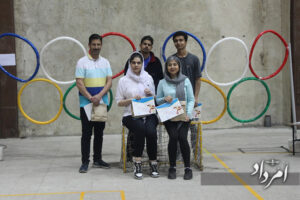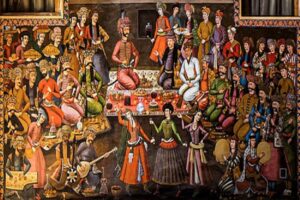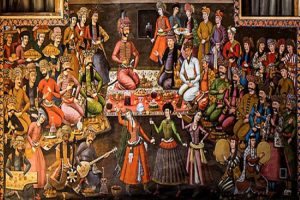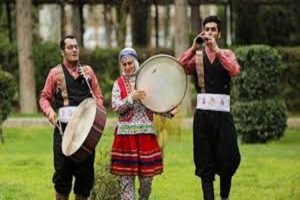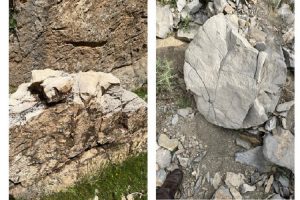Whatever has come to us from the ancient works of Elam civilization is so vivid that it looks as if we have a picture in front of us clearly showing different aspects of the people’s lives and pastime in distant millennia. The artists of the Elamite civilization have repeatedly demonstrated their interest in depicting their daily lives and of those around them. The “sun prayer” metal sculpture is an example of Elamite art. It is a skilled carving done with full mastery and tells us a part of the life of those days.
The metal painting of Sun Prayer is so beautiful, bright, and expressive that it is sometimes called “sun prayer ceremonial carving”. This metal engraving was created in middle Elamite period, between 1500 and 1100 BC when the Anzan dynasty ruled Elam. It is proof of the brilliant and rare craftsmanship of the Elamites. The period of Middle Elam continued until the Babylonians attacked Susa and crushed the civilization of Elam.
The metal engraving (or panel) “sun prayer” depicts a religious ritual. Two men who are half-seated face each other. In the hand of one of them, a bowl can be seen, perhaps for drinking or for pouring the liquid inside the hand of the man in front of him. the other man has cupped his two hands as if he wants the drink to be poured into his hands. These two men look like they are naked, and there is no sign of clothing on their bodies. There are tools around those two who may be religious men, such as cups and dishes for drinking, blessed food, stone pillars, wood that may have been holy and were used for religious rituals, podium, cylinders that have parts of the prayer room carved on them, and also cylinders that were not clear what they were for. But the whole sculpture shows that those two men are performing a religious ceremony. And the energizing wine they had to drink has prepared them to perform this mysterious ceremony. The most interesting is the way the two men are sitting facing each other, both carved without the least difference, demonstrating another sign of the precision and care in performing their religious rituals. In front of the engraving a podium with stairs can be seen, which maybe a temple or a holy place where the Elam religious rituals were performed in the open area. It is also possible that the two men in the metal sculpture of the sun prayer are busy washing and purifying themselves to perform a religious ritual. Therefore, it is not far from the mind to consider those two as two spiritual men. Other parts of this vivid and captivating depicteion are a table, a terracotta jar, and two large basins.
Another important point to observe in this artifact is the inscription carved on it. In this writing, we read: “I, Shilhak-Inshushinak, the son of Nahhunte, the king of Shush and Anshan, and the servant of the god Inshushinak, made this table.” All these signs indicate the performance of a religious ritual and purification.
There are quite many beautiful works of this kind, from the middle Elam period. In that period (between the 12th and 15th centuries BC), Elamite metalsmith masters made outstanding metal smelting and tool-making innovations. They created statues that now adorn museums all over the world, and show the brilliant civilization of this plateau in the ancient times.
It was in 1904 that Jacques-Jean-Marie de Morgan, a French archaeologist (who died in 1924), found the metal sculpture of Sun Prayer in the ruins of Susa and took it to the Louvre Museum in Paris. This precision work of Iran is now kept in that museum.



